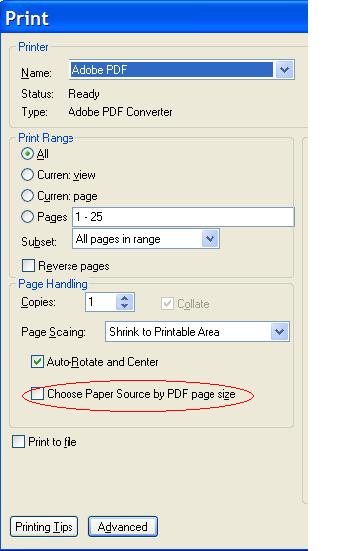If you were to come up with a good sampling of trends you see online, what would be included in that list? Facebook, YouTube, G-mail, ebay? Perhaps Yahoo!, Google Maps and Wiki sites as well. Let’s not forget the infinite number of blogs, RSS feeds, tagging, podcasting and bookmarking sites that are out there. If you’ve listed these, then you’ve listed a good sample of Web 2.0 elements.
Web 2.0 is a term that you’ve probably seen around on the Internet, and perhaps a term that is a bit obscured. Coined by Tim O’Reilly in 2004, the term encompasses a broad definition. But in a nutshell, it refers to the general trend in which the World Wide Web is going—a more connected and dynamic direction than ever before.
Broadly speaking, Web 2.0 places emphasis on the web as platform. Moreover, the user participation that enriches it, the networks that add to it, the tech innovation that motivates it, and the data that drives it, are all hallmarks of a Web 2.0 application. The result of such a combination? A web environment in which users can do more.
From just that short description alone, you can see that it’s a Web 2.0 world out there. And it’s seeping into the PDF world simply by influencing our digital habits and interests. For example, web designing tools are turning users into developers. If you’re a downloader, you’re a server as well. Desktop publishing software can make the user both publisher and reader at the same time.
These desktop applications, in turn, are then gradually shifted to web applications. Whether or not you’re an avid user of the PDF, you can see that these characteristics play a role in how we look at the file format in a different way, how it’s used, how it’s innovated and how it can be made more efficient online.
Web 2.0—It’s presence, It’s Impact, And It’s Influence On The PDF
Along with this Web 2.0 growth, Adobe has been taking PDF and its authoring tools and combining it with the web tools of Macromedia. This is forming an important relationship between the PDF and online content.
And this is why the PDF is gaining a foothold as Web 2.0 further develops. Adobe’s AIR is a runtime client that can render PDF, HTML and Flash content that can work external to the browser and as a desktop application connected to the Web while still taking advantage of your local storage and hard drive. This is just an example of PDF technology being leveraged for the web.
There is so much PDF content on the web because the PDF is accomplishing what other formats can’t do online. For instance, if you take a look at the main use of PDFs today, three words that might come to mind are: Interactive Document Processing. This is an efficient way of connecting both business workflows and the Web to each other.
The PDF format is becoming the interface between businesses and users. Just because of the sheer growth of the Internet and the wide user-base websites have established, it’s now convenient that tax forms be downloaded in PDF, or that applications be filled out online. Document processing and dynamic security control is what software and online services like LiveCycle Design ES and Adobe Document Server is geared towards–creating and connecting custom tailored backend systems with the client user.
Real time collaboration is now a major feature that enhances PDF workflows. The format is no longer a static virtual page , but a dynamic virtual space. This connectedness is also accompanied by hyperlinking, a thing to which other online documents is not immune. The format actually goes beyond the identity of a closed format and connects to the web and to users online.
However, what makes the PDF more unique is that the Adobe Reader is feature rich. Reader 8.1 can now support RSS feeds in XML format, a more dynamic and heavy duty linking than simple hyperlinking can provide. A Reader can keep you in touch with dynamic content that’s constantly updated.
Another aspect of today’s web is the “openness” of software and technology that is now becoming the norm for Web 2.0. It generates user input and contribution that drives the innovation and integration of different technologies.
Software manufacturing is becoming a communal project. The Adobe Mars project, for instance, still in beta status, is an example of this communal production. In one sense, Web 2.0 has made PDF users participants, third party developers and innovators all in one.
The user perspective on the PDF is changing drastically in that anyone can create one for any purpose, not just for those dealing with top corporation documents. This allows users to spontaneously create and share PDF files as you would normally email media or image files. PDFs are being uploaded and downloaded publicly on webpages in the form of documents and data containers.
In one form or another, the PDF is being developed in stride with Web 2.0 in mind. The PDF has gradually shifted its position and is a far from what it was three versions ago, the last version especially. If Web 2.0 is a vision of what the web could be, then the PDF format is a vision of what Web 2.0 documents should be.
 What makes the PDF so enticing to malicious users? There are more reasons than you think.
What makes the PDF so enticing to malicious users? There are more reasons than you think. 
 Now, three months later, as its Ballot Resolution Meeting (BRM) draws near in February, OOXML’s standardization is still up in the air as its interoperability, the OOXML hot topic of the day, will be a major factor in the decision to approve it as such.
Now, three months later, as its Ballot Resolution Meeting (BRM) draws near in February, OOXML’s standardization is still up in the air as its interoperability, the OOXML hot topic of the day, will be a major factor in the decision to approve it as such.